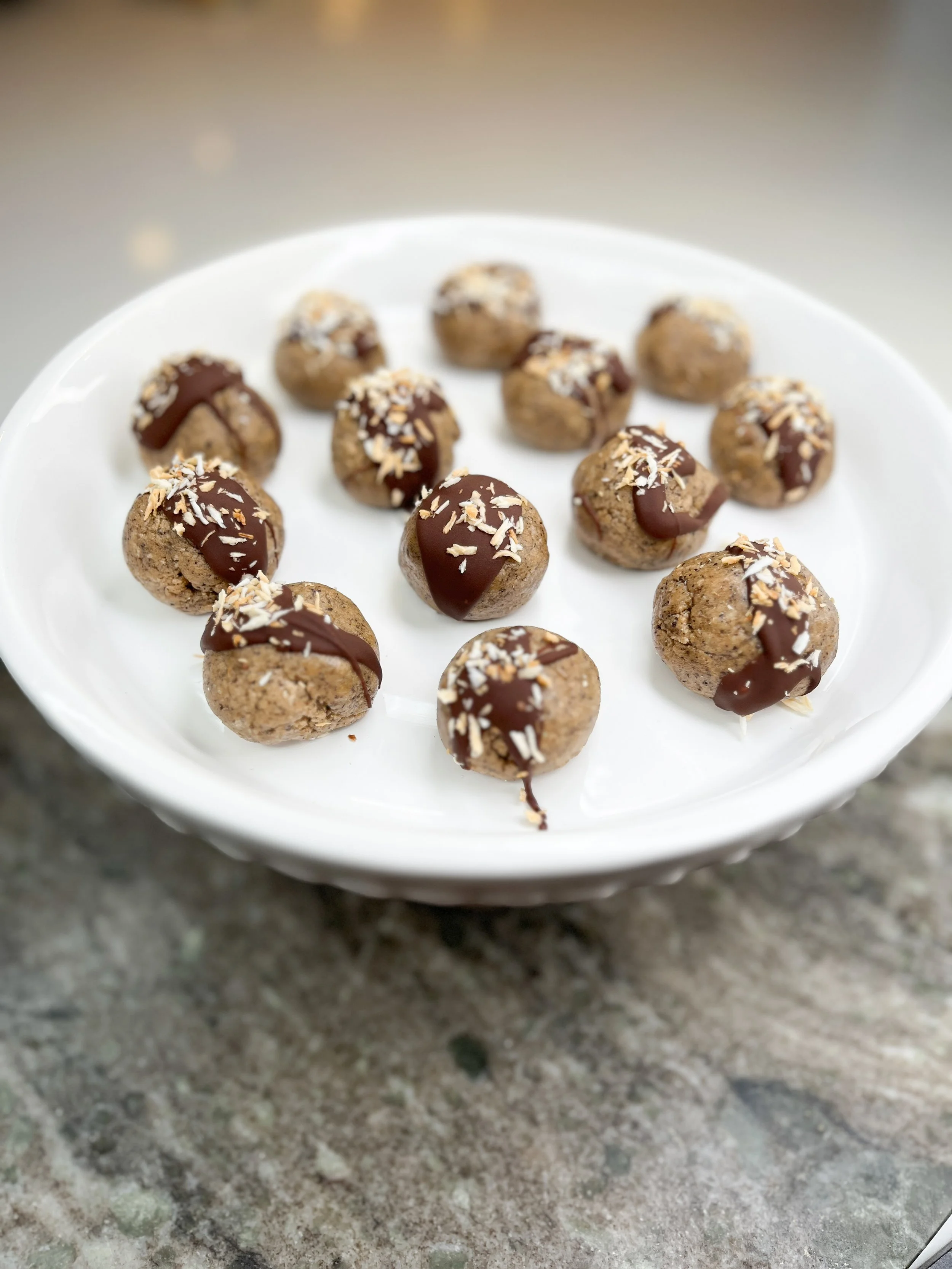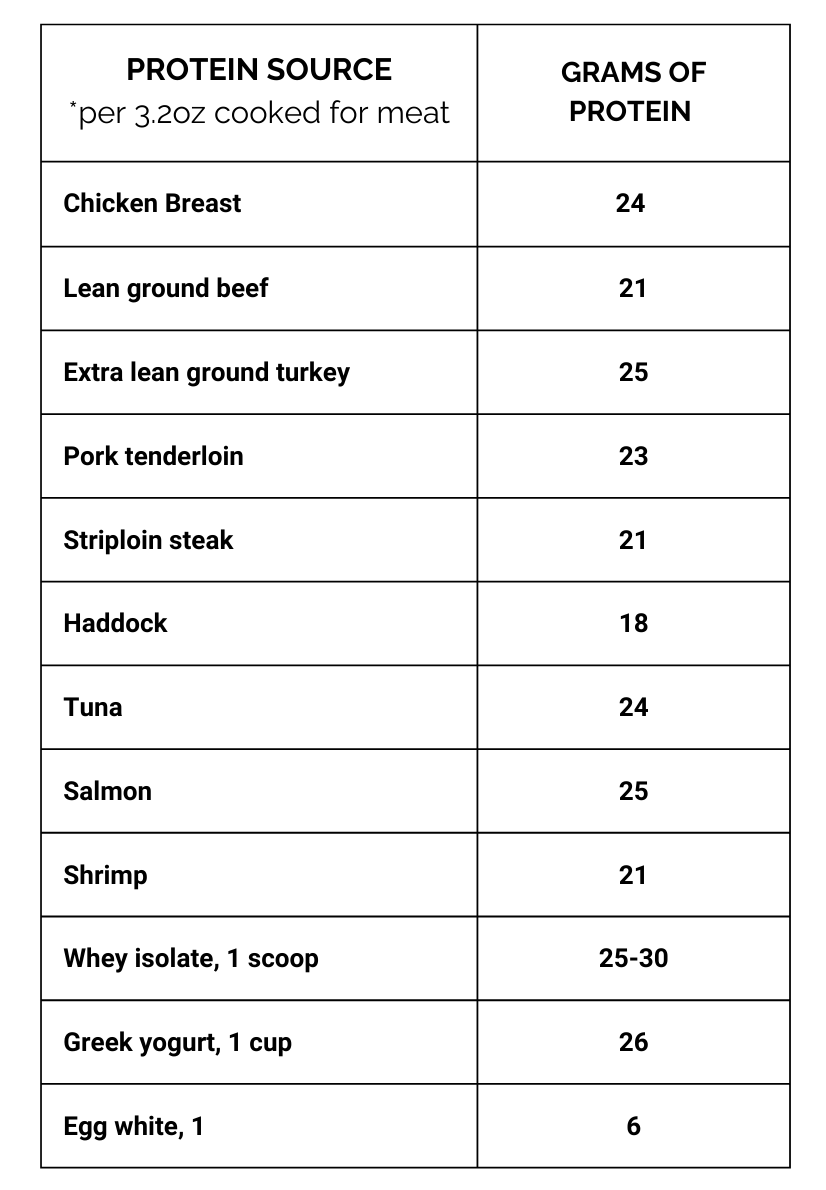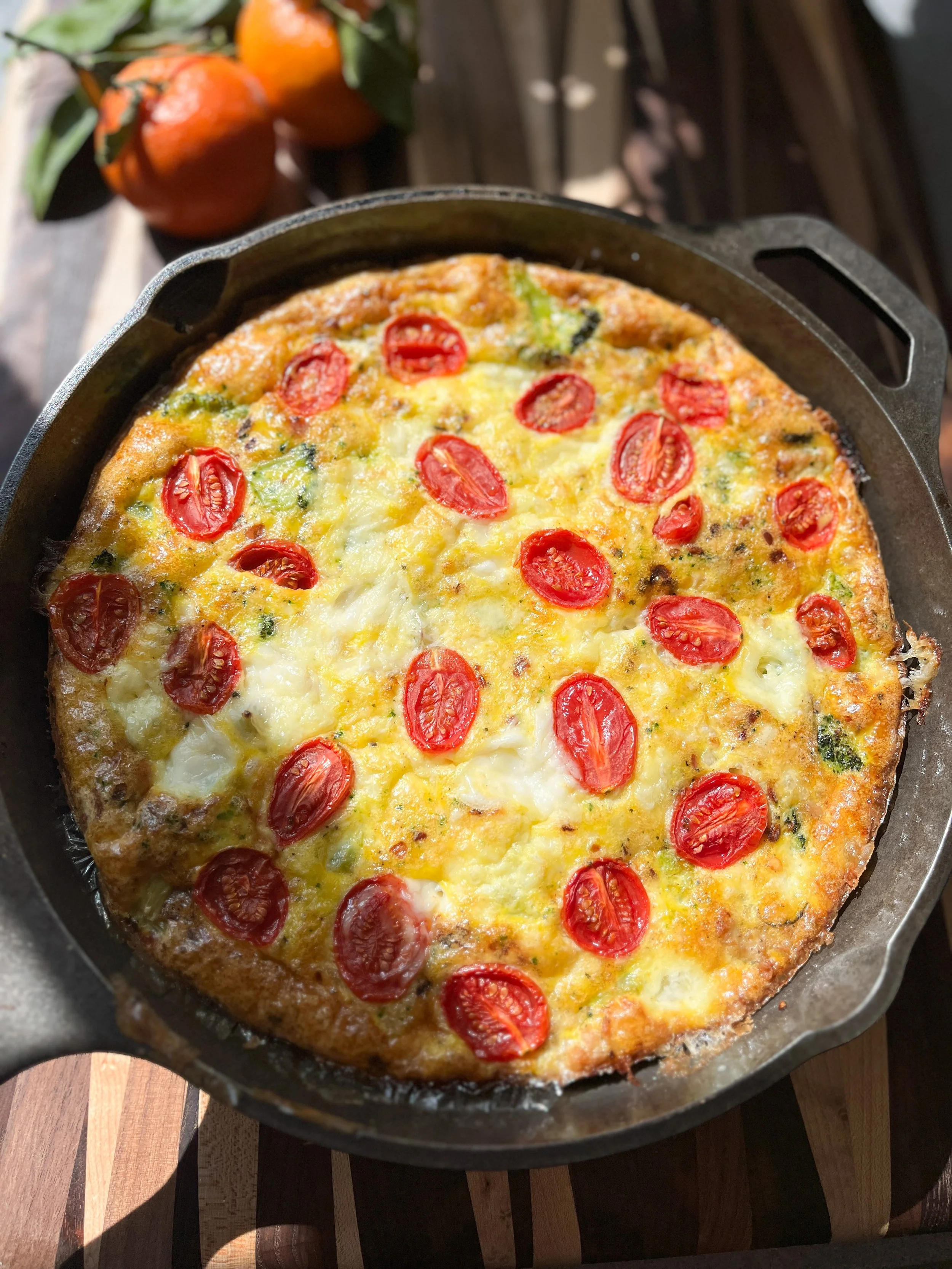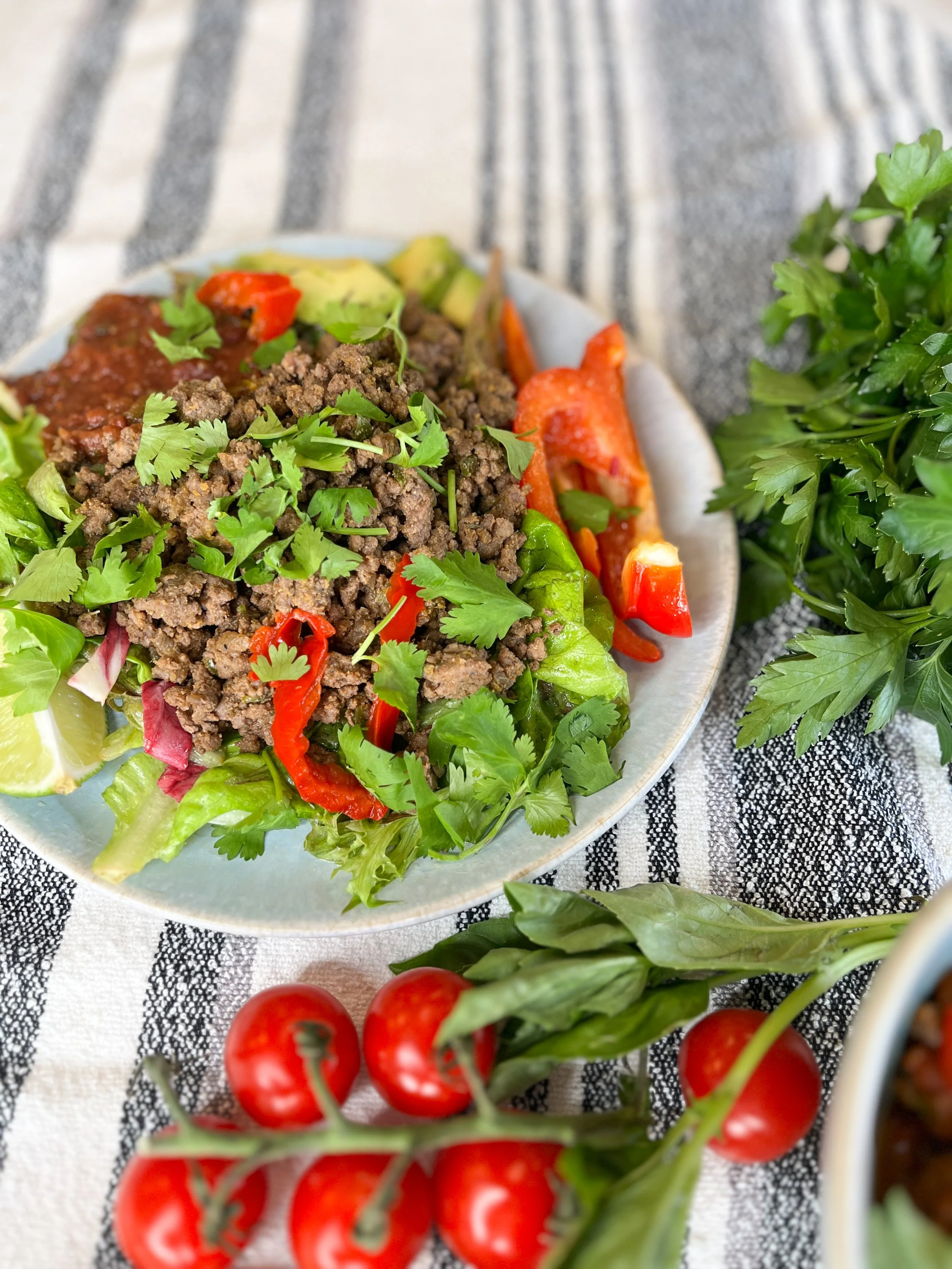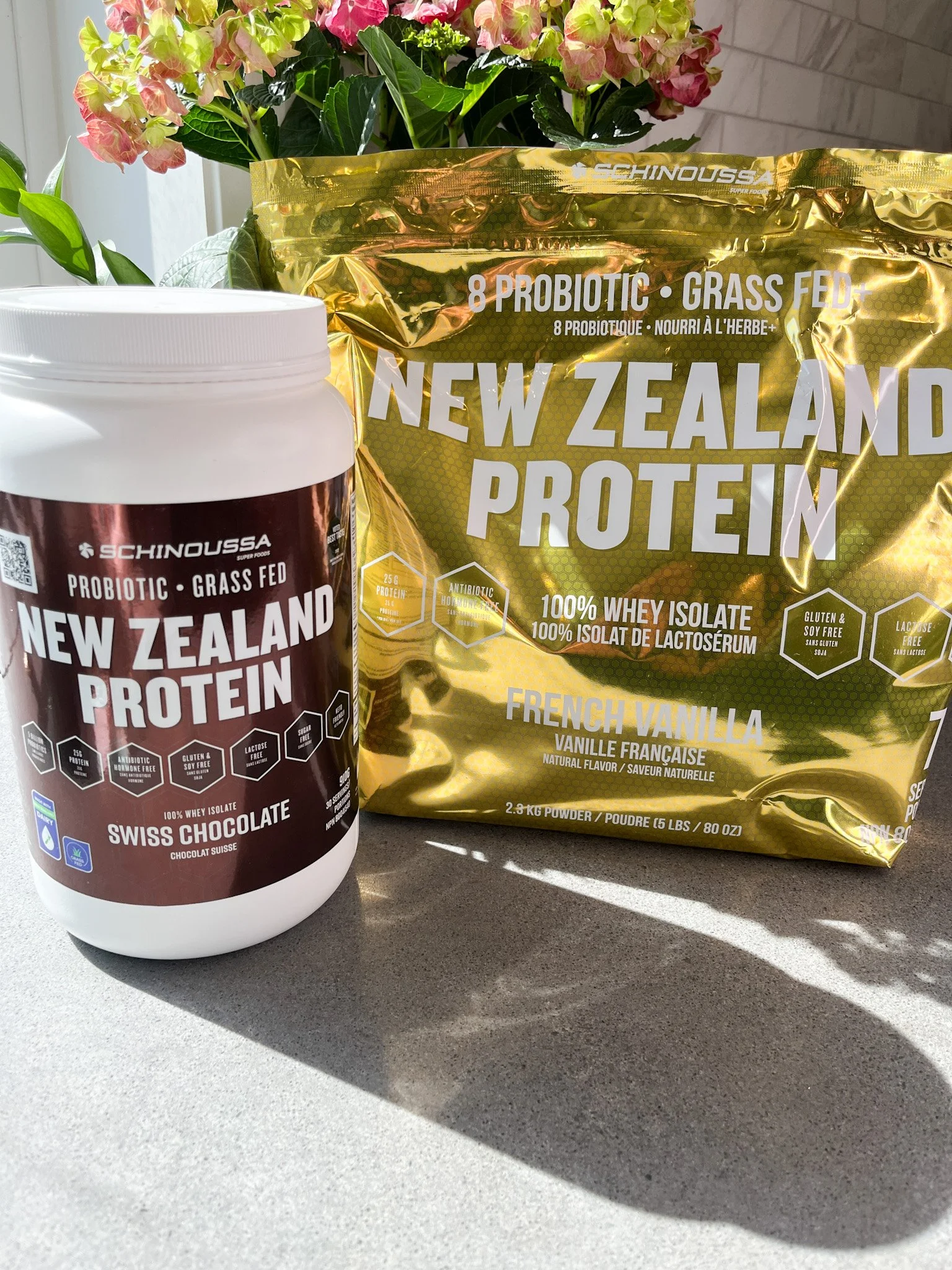How to Easily Hit your Protein Goal!
Have you ever wondered how can I eat more protein? And still enjoy my food? Or what is the best protein powder for weight loss or muscle gain? Keep reading for the step-by-step on how to eat more protein for your individual goals.
I know my telling you to simply eat more protein can feel overwhelming, which is why I am going to lay out exactly how to do it! First I recommend evaluating how much protein you are currently eating by tracking for a few days. Then plan to titrate up by 20-40 grams until you reach your recommended daily target. If you jump from 50 grams of protein to 150 grams in a day, you will likely feel some bloating, discomfort and constipation. This may sound annoying and tedious; and it is, but it is truly the only way to learn which foods to eat and how much you need of them to optimize your protein intake. You can use a free app like Cronometer which also tracks micronutrients.
What happens when you eat more protein?
You will likely find that you have fewer cravings for junk food, and that you are more satiated with less food as you increase your protein intake. You’ll likely gain more energy, you may start hitting new PRs at the gym and notice that your training sessions lead to more muscle definition. You may also find you recover faster after your workouts.
If you start to notice constipation and/or a heaviness after eating a protein-rich meal, this could be a sign that you need to support your stomach acid. Our stomach acid decreases with age, stress, medications and from lack of use (ie. from a low-protein diet). Things like diaphragmatic breathing to switch into rest-and-digest mode before meals, savouring your meals by chewing properly and eating without distraction can help to increase stomach acid. Having a small amount of apple cider vinegar before your meals can also help to stimulate stomach acid production. Adding in more targeted supplements like bitters and Betaine HCl may be needed for a period of time, but I do recommend working with a practitioner like a registered nutritionist or Naturopathic Doctor if you are considering these options to ensure you are getting quality products and using a protocol that is appropriate for you.
How I hit my personal protein goal
For my own goals, I usually aim for 125-140 grams of protein each day.
This is exactly how I do it:
Plan and build my meals around protein. I pick two protein sources for when I do my meal prep, which is on the weekend. I usually cook up 2-4lb of meat.
I pressure cook eggs for my favourite workday breakfast or for an easy grab-and-go protein source.
Thaw meat and cook it mid-week so I have protein on hand through the weekend. This way I always have a variety of protein sources ready to go at all times!
Keep easy protein sources on hand like Greek yogurt, cottage cheese, canned fish.
I aim for at least 30g of protein per meal, if not more, prioritizing my breakfast and dinner. If you don’t get in at least 30g of protein at breakfast, it becomes difficult to hit your target for the day.
Supplement with a quality protein powder like Schinoussa Whey Isolate. I’ll make a protein shake, or have my protein pudding, protein balls, protein ice cream or protein pancakes for a snack or dessert.
I’ve added in a quality EAAs supplement as well since turning 40. More on that here .
High Protein foods - a quick guide for quality protein sources:
This is just a brief list of high protein foods that are easily absorbed and used by our body. You will notice that they are all animal products. You can still eat a high protein diet without eating animal products but it will be more challenging. More on that here.
What to eat in a day for 100 grams + of protein: meal prep & tips
High protein breakfast ideas
I recommend doing breakfast on rotation; cycle through your two favourite breakfasts each week. This will save you time and from decision fatigue. Here are some of my favourite high protein breakfasts:
Frittata
Overnight Oats with protein
Breakfast Hash
Breakfast Patties
Protein Pancakes
Eggs + egg whites, turkey bacon and/or leftover meat & veggies
Eggs + egg whites, back bacon and/or leftover meat and a salad
Ground Meat & Egg Scramble with leftover veggies
High protein lunch, snack and dinner ideas
For lunch and dinner, I normally have 4-6oz of meat or fish and some veggies. Things like leftover steak and shredded chicken make great salads for lunch the next day. Tuna salad and salmon salad are my go-to’s when I don’t feel like cooking as much.
If I have a snack, it’s often protein lunch rolls, protein pudding, chia pudding or it looks like a smaller version of my lunch, or even meat with some fruit. I try to get in as much whole foods as possible, but sometimes my schedule (or motivation) requires convenience options like deli meat, jerky, protein bars or protein powder.
My dinner is often 4-6oz of meat like air fryer chicken breast or roasted chicken thighs, slow cooker carnitas, taco beef, grilled steak, salmon, pork chops or pan fried haddock. I like to switch it up to keep things interesting!
I have found the secret to enjoying eating a high protein diet is to experiment and find dishes that you love! Have fun with it! Give yourself 3-4 weeks to find a routine that works for you and for your body to adjust. You’ll quickly find that you start craving protein, especially if you are on the low end for a few days.
Time-saving tips to get in more protein:
If you forget to thaw meat and run out, cook from frozen! Like with my Tasty and Tender Shredded Chicken recipe.
Or grab a rotisserie chicken, steak or another fast-cooking meat like sausage.
Cook up your favourites on repeat. A few of mine include taco beef, air fryer chicken, burgers etc.
Keep things simple and do a lot of single-ingredient dishes so you can mix and match to create completely new meals and flavours using different herbs, spices and sauces.
When you eat out, ask for an extra side of chicken for that salad if the portions are small. Get extra protein to go for lunch the next day.
Always cook at least 2lb of meat at a time.
Freeze extra meat in portion-sizes for busy weeks; taco beef, shredded chicken and pork tacos all freeze very well.
Use a high quality protein powder that works for you body to top off your protein, for travel, crazy schedule-packed days and for events.
The best protein powder for you
What’s the best protein powder for my goals and for my body? For muscle gain and weight loss? For baking? The type and quality of protein powder does matter.
If you live a busy lifestyle, want to maintain or grow your muscle and/or have weight loss goals, protein powder is something you may want to consider adding into your diet. Protein powder offers an easy way to increase our protein intake without the need for cooking. And having a protein shake post-training is an effortless way to quickly absorb the amino acids we need to stimulate muscle growth and support recovery. It makes hitting our optimal protein target so much easier, especially if you have weight loss goals or have higher needs.
The most bioavailable source of protein is made from cow’s milk. Whey and casein are both extracted from cow’s milk and contain all 9 essential amino acids, making them a complete protein which fuels muscle protein synthesis. You have options here; whey isolate, whey concentrate and casein all fall under this category. For those who cannot tolerate dairy, I recommend sourcing a quality beef protein powder. And for vegan and vegetarian diets, there are quality plant protein powders on the market.
Whey isolate: This goes through a series of filters that removes the fat, sugar and lactose so you end up with a powder that has a very high protein content, but no fat and carbs. Whey isolate is around 90% protein. Whey isolate absorbs very quickly and this raises the amino acids in our blood for about 2 hours, helping to stimulate muscle protein synthesis. This is great for optimizing muscle growth and recovery post-training, or any time. I recommend whey isolate for those who have any sensitivities to dairy, whereas concentrate and casein may trigger symptoms for these folks. I have found that most of my clients do well with a clean whey isolate like Schinoussa Whey Isolate. And although whey protein isolate doesn’t technically contain any lactose, it still can cause some discomfort for those who are sensitive to dairy. Whey isolate can be used for baking and pancakes, but caution to not overcook as the high protein with low fat content can make for very dry results!
Whey protein concentrate: This goes through fewer filters than whey isolate, so you get a protein powder that is higher in lactose and fat. Whey concentrates can range from 30%-80%+ protein; you want to look for one that is 80%+ pure protein. Whey concentrate can be harder to digest, especially if you have any dairy sensitivities. Whey concentrate tends to provide better results with baking because of its higher fat content, but most recipes can be adjusted to use whey isolate.
Casein: This is made when milk is separated through filters, or with acid. The whey settles on top with the casein on the bottom. Casein has a slower rate of absorption; it gradually increases amino acids in the bloodstream for 5-7 hours. This makes it the optimal choice for building muscle while you sleep. Consuming 30-40 grams of casein protein has been shown to increase muscle protein synthesis over the course of the night without negatively impacting fat metabolism. This is great for anyone who wants to build or maintain muscle, especially while losing fat. If you tolerate it. Casein is a great option for cooking and baking as it usually makes for a creamier mixture that doesn’t dry out.
Beef Protein: Beef protein is a good alternative for those who cannot tolerate whey isolate, as it tends to be very easy on the gut. But it will not be as effective for stimulating muscle protein synthesis due to its inferior (in terms of muscle gain) amino acid profile compared to whey. The amino acids differ by the type of protein used; some are actually collagen hydrolysates and other are beef protein but still will not have adequate leucine to trigger muscle protein synthesis. How it’s made really depends on the company producing it, but a quality brand will use higher quality beef, cook it and then dry it through either spray drying or freeze drying. Beef protein is not great for cooking or baking because it tends to gelatinize, resulting in a sticky product, but it is excellent for making protein ice cream.
Plant Protein: Plant proteins are usually made from rice, hemp, pea and/or other plant proteins. Plant proteins are not as high quality as animal products, meaning they are not as bioavailable and do not have the same level of amino acids as animal products. This means they are less effective at stimulating muscle protein synthesis. Since these are often sourced from grains and legumes, they will be higher in carbohydrates, and can be harder to digest and may cause some bloating and gas. Look for a fermented protein like Genuine Health’s Fermented Organic Vegan Protein which can be better tolerated. Another issue that can present for some individuals is the high FODMAP content typical to plant protein powders. Perfect Supplements’ Perfect Plant Protein is the solution to this, as it is a low-FODMAP protein powder. I do recommend finding a plant protein that works well for you if you do follow a vegetarian or vegan diet because it will help you optimize your protein intake.
Note on egg white and soy protein powders: These are common allergens so I tend to recommend avoiding these options if possible since protein powder will often be a staple for a high-protein diet.
Quality Matters. What to look for in a protein powder:
Ignore the marketing and always read the ingredient label. The protein(s) should be the first ingredient(s). Look for unnecessary additives. You’ll likely see sweeteners, flavouring and thickeners. In general, you want to look for protein powders with the fewest ingredients.
Non-nutritive sweeteners: I recommend avoiding sweeteners like aspartame and sucralose because of the amount of research showing that these can have a negative impact on our health. Instead opt for protein powders that use stevia or monk fruit.
Sugar: I recommend protein powder that has 2g of sugar or less per serving.
Sugar alcohols: While sorbitol, maltitol and erythritol are generally safe, they are often culprits for causing gas, bloating and other digestive symptoms. Just monitor how you feel if your protein contains sugar alcohol.
Natural and Artificial flavours: A ‘natural flavor’ is any type of flavour additive derived or altered from a natural plant or animal substance. ‘Ariticial flavor’ is derived from petroleum products. Both are manufactured in labs to enhance the flavor of a processed food. While generally recognized as safe, these can contain over 100 chemicals that can cause issues for some individuals. I personally avoid artificial flavours and choose products with natural flavours carefully as it’s really hard to completely avoid them. If your protein powder contains it, ensure it’s a reputable brand that you trust.
Thickeners: Common thickeners include xanthan gum, guar gum, inulin, psyllium husk and dextrins. All are safe in small amounts, but can cause some digestive upset. So once again, monitor how you feel! This is individual.
Other ingredients: avoid carrageenan, vegetable oils and hydrogenated oils as all have shown to cause inflammation.
Aim for 20g+ of protein per serving.
For whey protein concentrate, look for 80-90% pure protein.
Look for proteins that contain at least 2g of leucine per serving; you may need to look for the amino acid profile online for this.
Regardless of its bioavailability, you need to be able to digest it well, without discomfort, to properly absorb and use the nutrients. If you notice you’re getting bloating, gas or any other discomfort, try skipping that new protein powder you’re using and see if that’s the culprit.
In summary, eating a high protein diet can feel challenging at first, but in time you will find it gets easy to hit your protein goals. And it is worth making an effort to ensure we are eating an optimal amount of protein to support healthy bones and muscle, muscle growth, weight management, mood regulation, sustained energy levels and a higher quality of life as we age.
More Protein Resources
The Benefits of Collagen, EAAs and Glutamine
Why Muscle is an Important Part of your Weight Loss Plan
Best Protein Foods and Protein Timing for Weight Loss and Health


